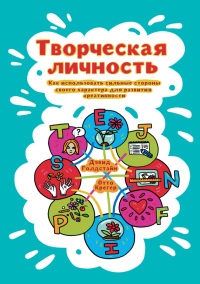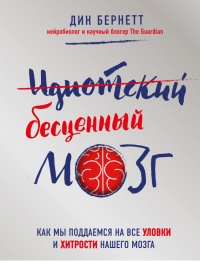Читать книгу "Креативный мозг. Как рождаются идеи, меняющие мир - Элхонон Голдберг"
Шрифт:
Интервал:
Закладка:
26. V. Llaurens, M. Raymond, and C. Faurie, «Why Are Some People Left-Handed? An Evolutionary Perspective», Philosophical Transactions of the Royal Society of London, B: Biological Sciences 364 (2009): 881–894.
27. S. F. Witelson, «The Brain Connection: The Corpus Callosum Is Larger in Left-Handers», Science 229 (1985): 665–668; Q. Gao, J. Wang, C. Yu, and H. Chen, «Effect of Handedness on Brain Activity Patterns and Effective Connectivity Network During the Semantic Task of Chinese Characters», Scientific Reports 5 (2015): 18262; R. Westerhausen, C. Walter, F. Kreuder, R. A. Wittling, E. Schweiger, and W. Wittling, «The Influence of Handedness and Gender on the Microstructure of the Human Corpus Callosum: A Diffusion-Tensor Magnetic Resonance Imaging Study», Neuroscience Letters 351 (2003): 99—102; R. Westerhausen, R. F. Kreuder, S. Dos Santos Sequeira, C. Walter, W. Woerner, R. A. Wittling, E. Schweiger, and W. Wittling, «Effects of Handedness and Gender on Macro-and Microstructure of the Corpus Callosum and Its Subregions: A Combined High-Resolution and Diffusion-Tensor MRI Study», Cognitive Brain Research 21 (2004): 418–426.
28. E. Goldberg, D. Roediger, N. E. Kucukboyaci, C. Carlson, O. Devinsky, R. Kuzniecky, E. Halgren, and T. Thesen, «Hemispheric Asymmetries of Cortical Volume in the Human Brain», Cortex 49 (2013): 200–210.
29. M. Wooldridge, An Introduction to MultiAgent Systems (New York: John Wiley &Sons, 2002).
30. H. A. Simon, The Sciences of the Artificial, 3rd edn. (Cambridge, MA: MIT Press, 1996); A. Newell, J. C. Shaw, and H. A. Simon, «The Process of Creative Thinking», in Contemporary Approaches to Creative Thinking, Eds. H. E. Gruber, G. Terrell, and M. Wertheimer (New York: Atherton, 1962): 63—119.
31. Из некролога Харольду Коэну, опубликованному на сайте http:// www.aaronshome.com/ Здесь также можно найти информацию о Харольде Коэне и живописи AARON.
32. Вы можете найти информацию о сочинениях Эмили Хауэлл на сайте: www.youtube.com.
33. W. McCulloch and W. Pitts, «A Logical Calculus of Ideas Immanent in Nervous Activity», Bulletin of Mathematical Biophysics 5 (1943): 115–133.
34. M. Minsky and S. Papert, Perceptrons: An Introduction to Computational Geometry (Cambridge, MA: MIT Press, 1969).
35. Всеобъемлющий обзор в кн.: D. S. Levine, «Neural Network Models of Human Executive Function and Decision Making», in Executive Functions in Health and Disease, Ed. E. Goldberg (Cambridge, MA: Academic Press, 2017).
36. N. Marupaka and A. A. Minai, «Connectivity and Creativity in Semantic Neural Networks», Neural Networks (IJCNN) (International Joint Conference on Neural Networks, July 31— August 5, 2011).
37. J. M. Fuster, The Neuroscience of Freedom and Creativity: Our Predictive Brain (Cambridge, UK: Cambridge University Press, 2013).
38. L. Scheffler, «Which Features Matter How Much When?» Presentation at BICA 2016; S. Thaler, «Pattern Turnover Within Synaptically Perturbed Neural Systems», Presentation at BICA 2016; S. Thaler, «Creativity Machine Paradigm», in E. G. Carayannis (Ed.), Encyclopedia of Creativity, Innovation and Entrepreneurship (New York: Springer, 2013): 447–456.
39. A. Manfre’, A. Augello, I. Infantino, G. Pilato, and F. Vella, «Exploiting Interactive Genetic Algorithms for Creative Humanoid Dancing», Presentation at BICA 2016; A. Augello, I. Infantino, A. Manfre’, G. Pilato, and F. Vella, «Analyzing and Discussing Primary Creative Traits of a Robotic Artist», Presentation at BICA 2016; www.facebook.com/ CRSSLAB
40. E. Borovikov, I. Zavorin, and S. Yershov, «On Virtual Characters That Can See», Presentation at BICA 2016.
41. O. Chernavskaya, D. Chernavskii, V. Karp, A. Nikitin, and D. Schepetov, «An Architecture of Thinking System Within the Dynamic Theory of Information», BICA 12 (2015): 144–154; O. Chernavskaya, D. Chernavskii, and Y. Rozhylo, «A Hypothesis on the Nature of «Aesthetic» Emotions and the Concept of «Masterpiece», Presentation at BICA 2016.
Внимание!
Сайт сохраняет куки вашего браузера. Вы сможете в любой момент сделать закладку и продолжить прочтение книги «Креативный мозг. Как рождаются идеи, меняющие мир - Элхонон Голдберг», после закрытия браузера.




